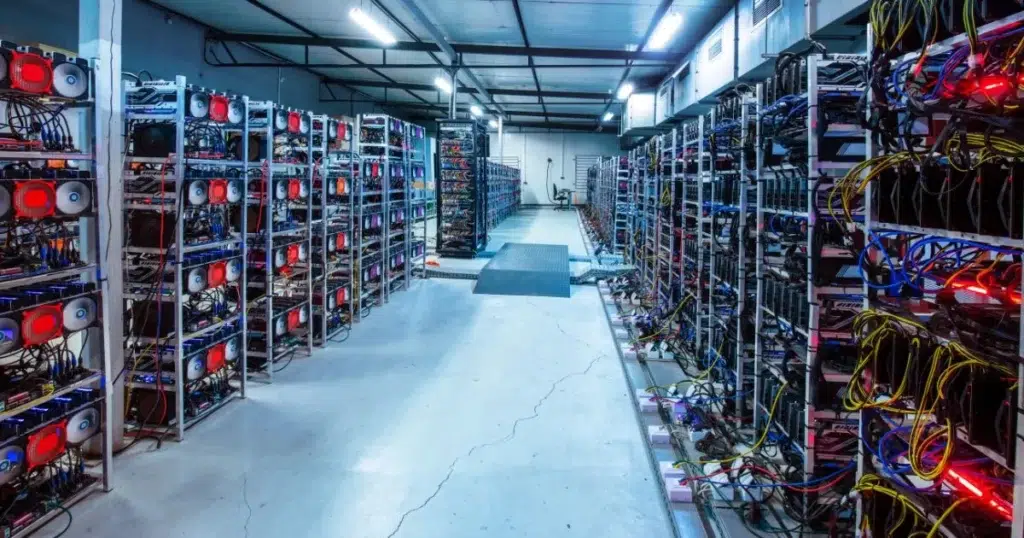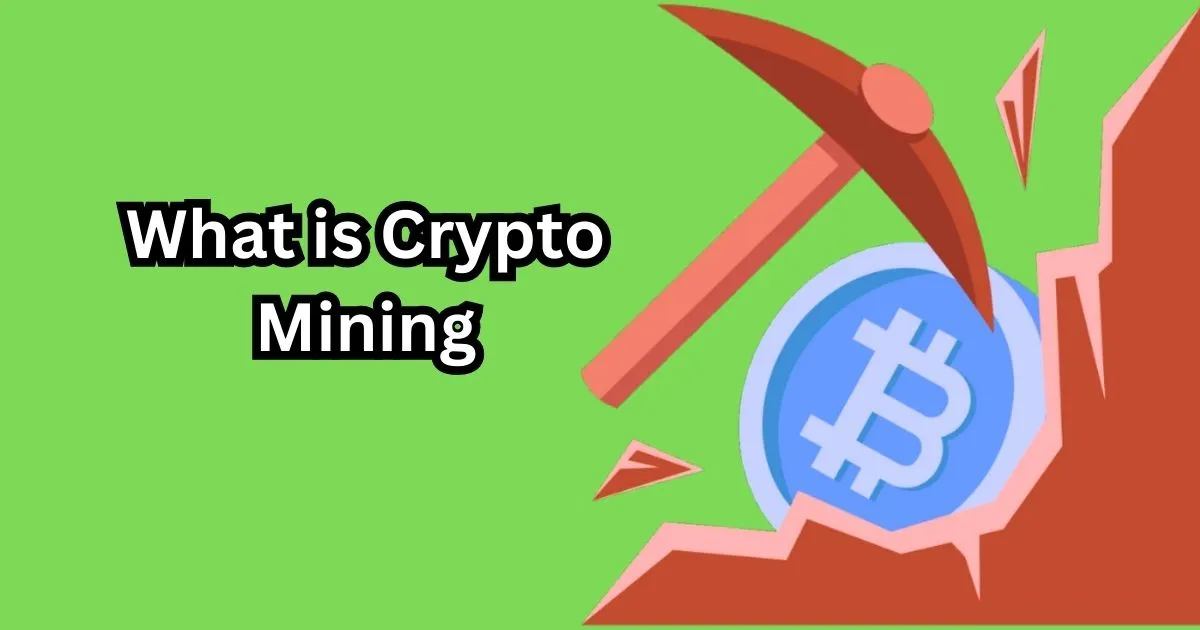In this article, we will explore What is Crypto Mining and How Does It Work?. Cryptocurrencies have gained significant popularity in recent years, offering individuals a new way to transact and store value digitally. But have you ever wondered how these digital currencies come into existence? The answer lies in the process of crypto mining.
What is Crypto Mining and How Does It Work?

Introduction
Cryptocurrency mining is the backbone of many decentralized digital currencies, including Bitcoin, Ethereum, and others. It involves the process of validating and adding new transactions to the blockchain, the underlying technology that powers cryptocurrencies. Crypto mining is performed by miners who contribute their computational power to solve complex mathematical puzzles and secure the network.
Understanding Cryptocurrency
Before diving into the details of crypto mining, it’s essential to understand the basics of cryptocurrency. Cryptocurrencies are digital or virtual currencies that utilize cryptographic techniques to secure transactions and control the creation of new units. They are decentralized and operate on a technology called blockchain, which is a distributed ledger that maintains a record of all transactions.
What is Crypto Mining?
Crypto mining refers to the process of verifying and validating transactions in a blockchain network using computational power. Miners employ powerful computers equipped with specialized hardware and software to solve complex mathematical problems. By solving these puzzles, miners prove their work and earn the right to add a new block of transactions to the blockchain.
How Does Crypto Mining Work?
Crypto mining relies on consensus algorithms, the most common being Proof of Work (PoW) and Proof of Stake (PoS). In the PoW algorithm, miners compete to solve computational puzzles by performing countless calculations until they find a solution. The first miner to solve the puzzle broadcasts the solution to the network, and if it’s valid, the miner is rewarded with newly minted cryptocurrency.
Types of Crypto Mining
Apart from PoW and PoS, there are other mining algorithms used by different cryptocurrencies. Some popular algorithms include Ethash, X11, Scrypt, and Equihash. Each algorithm has its unique characteristics and requirements, attracting different miners based on their hardware capabilities and preferences.
Proof of Work (PoW)
PoW is the original consensus algorithm introduced by Bitcoin. It ensures the security of the network by requiring miners to solve complex mathematical problems. This process demands significant computational power and energy consumption. However, PoW has been criticized for its environmental impact and high energy consumption.
Proof of Stake (PoS)
PoS is an alternative consensus algorithm that aims to address the energy inefficiency of PoW. In PoS, validators are chosen to create new blocks based on their stake in the network. Validators are required to hold a certain amount of cryptocurrency as collateral, ensuring their commitment to the network’s security.
Other Mining Algorithms
While PoW and PoS are the most well-known algorithms, various cryptocurrencies utilize different algorithms to secure their networks. These algorithms often introduce innovative approaches to achieve consensus, such as delegated proof of stake (DPoS), directed acyclic graph (DAG), and Byzantine fault tolerance (BFT).
Mining Hardware and Software
To engage in crypto mining, miners need specialized hardware and software. Here are some key components:
- Mining Hardware: Miners use powerful computer systems called mining rigs. These rigs are equipped with high-performance graphic processing units (GPUs) or application-specific integrated circuits (ASICs) designed specifically for mining cryptocurrencies. These devices are optimized for the complex calculations required in the mining process.
- Mining Software: Mining software acts as the interface between the mining hardware and the blockchain network. It allows miners to connect to the network, manage their mining operations, and monitor the performance of their rigs. Popular mining software includes CGMiner, BFGMiner, and EasyMiner.
- Wallets: Miners also require digital wallets to store the cryptocurrencies they mine. Wallets come in various forms, such as software wallets, hardware wallets, or online wallets. They provide secure storage for the mined coins and enable miners to send or receive funds.
Setting Up a Mining Rig
Setting up a mining rig involves several steps:
- Hardware Selection: Miners need to choose the right hardware based on the mining algorithm and their budget. ASIC miners are generally more efficient for specific algorithms, while GPUs offer flexibility for mining different cryptocurrencies.
- Software Installation: Miners must install the necessary mining software and configure it to connect to the chosen cryptocurrency network. They also need to set up their digital wallets to receive the mined coins.
- Power and Cooling: Mining rigs consume a significant amount of electricity and generate heat. Miners need to ensure they have access to stable power sources and implement proper cooling mechanisms to prevent overheating.
- Internet Connection: A stable and reliable internet connection is essential for mining. Miners rely on internet connectivity to connect to the blockchain network and receive new transactions to validate.
Joining a Mining Pool
While individual mining can be challenging due to the increasing difficulty and competition, miners can join mining pools to combine their resources and increase their chances of earning rewards. Mining pools are groups of miners who work together and share the rewards based on their contributed computational power.
By joining a mining pool, miners have a more consistent income stream, although the rewards are shared among the participants. Popular mining pools include Antpool, F2Pool, and Slush Pool.
The Mining Process
Once the mining rig is set up and connected to the network, the mining process follows these steps:
- Transaction Validation: Miners receive pending transactions from the network. They verify the authenticity of each transaction and ensure that the sender has sufficient funds to complete the transaction.
- Block Creation: Miners collect valid transactions and bundle them into blocks. They include a unique identifier called a “hash” for each block, which serves as a digital fingerprint.
- Solving the Puzzle: Miners start solving the complex mathematical puzzle associated with the mining algorithm. They perform numerous calculations, trying to find a hash value that meets certain criteria, such as having a specific number of leading zeros.
- Broadcasting the Solution: Once a miner finds a valid solution, they broadcast it to the network. Other miners verify the solution’s validity, ensuring consensus is reached.
- Block Addition: If the solution is accepted, the miner adds the new block to the blockchain. The block contains the verified transactions, the hash of the previous block, and the miner’s public key.
- Reward Distribution: Miners are rewarded with newly minted cryptocurrency and transaction fees for their efforts. The amount of the reward depends on the network’s rules and the miner’s contribution.
Rewards and Incentives
Mining rewards serve as an incentive for miners to participate in the network. The rewards typically consist of two components:
- Block Rewards: Miners receive a certain number of newly minted coins as a reward for successfully adding a new block to the blockchain. The specific amount varies depending on the cryptocurrency. For example, Bitcoin miners currently receive 6.25 bitcoins per block.
- Transaction Fees: In addition to block rewards, miners may also receive transaction fees. When users send transactions on the blockchain, they can attach a fee to prioritize their transactions. Miners have the option to include transactions with higher fees in the blocks they mine, earning those fees as an additional reward.
The total reward earned by miners depends on various factors, including the network’s block reward structure, transaction volume, and the miner’s computational power.
Environmental Impact of Crypto Mining
Crypto mining has drawn attention due to its environmental impact, primarily associated with the energy consumption of the mining process. The energy-intensive computations required for mining, particularly in Proof of Work algorithms, have raised concerns about carbon footprints and sustainability.
To address these concerns, several initiatives have emerged. Some cryptocurrencies are exploring alternative consensus algorithms like Proof of Stake, which consumes significantly less energy. Additionally, efforts are being made to utilize renewable energy sources for mining operations and improve overall energy efficiency.
Conclusion
Crypto mining plays a vital role in the creation and security of cryptocurrencies. It involves using computational power to validate transactions and add them to the blockchain. By understanding the process of crypto mining, you gain insights into the decentralized nature of cryptocurrencies and the incentives that drive miners to contribute their resources.
While mining can be a complex and resource-intensive process, it continues to evolve with the development of new consensus algorithms and advancements in mining hardware. As the cryptocurrency landscape evolves, the environmental impact of mining remains a challenge that the industry strives to address.
Read More:
FAQs (Frequently Asked Questions)
- Is crypto mining profitable?
- The profitability of crypto mining depends on various factors, including the cryptocurrency’s value, mining difficulty, electricity costs, and equipment efficiency. It is essential to consider these factors and do thorough research before engaging in mining.
- Can I mine cryptocurrencies with my regular computer?
- In most cases, mining cryptocurrencies with a regular computer is not profitable or efficient. Specialized mining hardware, such as ASICs or powerful GPUs, is generally required to compete in the mining industry.
- Are there risks involved in crypto mining?
- Yes, there are risks associated with crypto mining. These include the volatility of cryptocurrency prices, potential hardware malfunctions, and the operational costs of mining. Miners should carefully assess the risks and take necessary precautions.
- Does crypto mining consume a lot of electricity?
- Yes, crypto mining can consume a significant amount of electricity, especially in Proof of Work algorithms. This has led to concerns about its environmental impact. However, efforts are being made to explore more energy-efficient mining alternatives.
- Can I mine multiple cryptocurrencies simultaneously?
- It depends on the mining hardware and software you are using. Some mining rigs support mining multiple cryptocurrencies simultaneously, while others are designed for specific algorithms or coins. Researching and selecting the right hardware and software is crucial for multi-mining setups.
